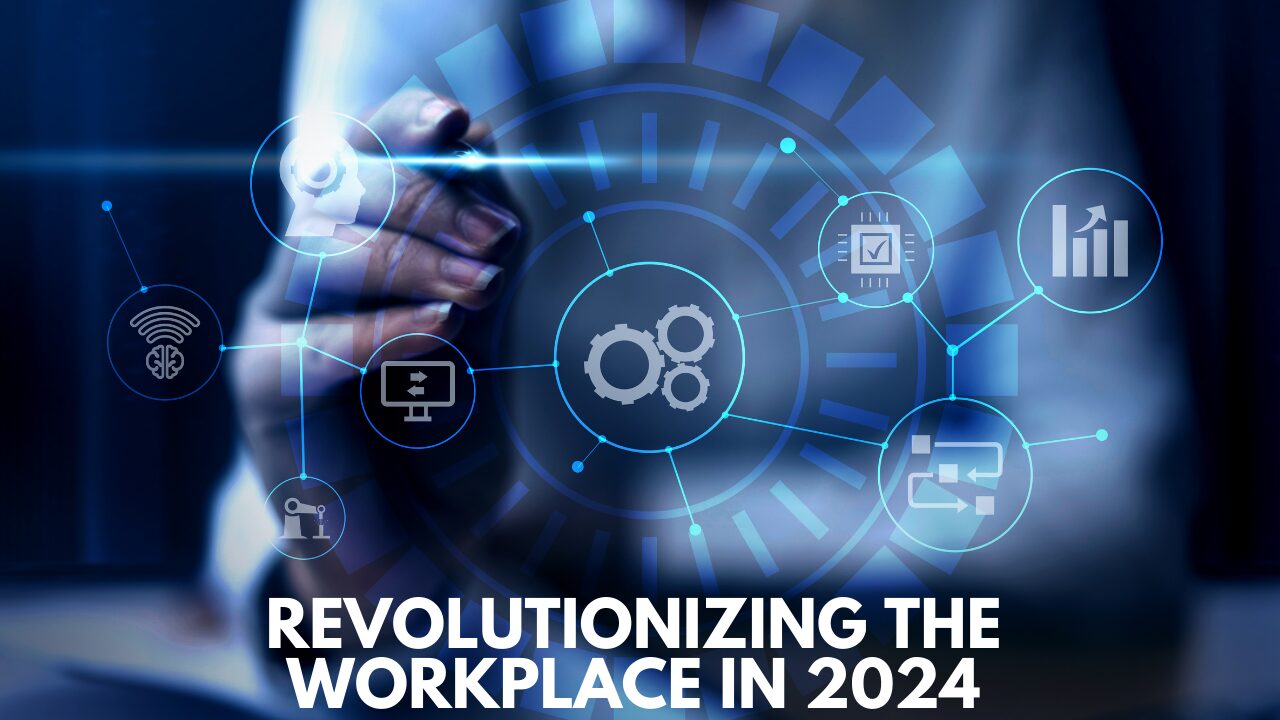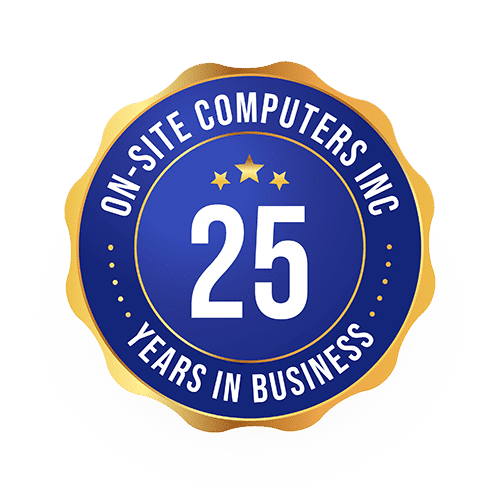How Technology Disrupts the Modern Workplace
In recent years, we have witnessed numerous technological advancements that have revolutionized our work. These transformative trends have reshaped the work landscape. Here, we briefly discuss seven significant technology trends changing how we operate professionally.
- Artificial Intelligence (AI): AI has made significant strides, allowing for the automation of various tasks. These profound changes enable teams to complete mundane tasks more efficiently, freeing up human resources for creative and strategic pursuits.
- Hybrid Work Models: The adoption of hybrid work environments has spurred a need for employees to develop new skills and strategies. The success of hybrid work relies on digital proficiency, effective communication, collaboration, and self-management capabilities.
- Web3: Decentralized Internet: With the advent of Web3, organizations are transitioning toward decentralized networks. This shift provides opportunities for enhanced security, data ownership, and peer-to-peer transactions, opening new avenues for collaboration and innovation.
- Remote Collaboration Tools: As remote work becomes more prevalent, advanced collaboration tools are essential to bridge geographic gaps. These platforms facilitate seamless communication and teamwork in real-time, regardless of location.
- Virtual and Augmented Reality (VR/AR): VR and AR technologies have made their way into the workplace, transcending the boundaries of physical space. Applications range from virtual meetings to employee training, making these immersive experiences invaluable additions to modern workflows.
- The Metaverse: As the metaverse gains traction, we can envision a future where our professional lives seamlessly intersect with this virtual universe. This convergence will revolutionize digital collaboration, networking, and creative innovation.
- 5G Communication: Implementing 5G technology promises greater connectivity and faster data transfer speeds. As a result, organizations can experience more efficient operations, bolster remote work capabilities, and accelerate digital transformation.
In conclusion, these emerging technology trends disrupt the modern workplace differently, delivering new opportunities and challenges for organizations and individuals. We can adapt and excel in an ever-evolving professional landscape by understanding these transformative forces.
1. Artificial Intelligence
As we progress into the future, artificial intelligence (AI) has become a prominent transformative technology trend altering how we work. AI allows automation of routine tasks, enabling teams to manage mundane assignments more efficiently. Doing so frees up human resources for more innovative and strategic pursuits. Here are some key aspects of AI in the workplace:
- AI-powered chatbots help streamline customer service, providing quick and accurate responses to client inquiries.
- Data analysis: AI algorithms can process vast amounts of data, identify patterns, and offer valuable insights. These insights assist in making better-informed decisions.
- Predictive analytics: Enterprises employ AI tools to forecast market trends and consumer behavior, aiding in strategic planning and optimizing business operations.
- Talent acquisition: AI-driven recruitment platforms enable HR professionals to efficiently screen and match candidates to suitable job positions.
AI technology has become indispensable in many industries, significantly improving efficiency, communication, and decision-making.
2. Remote Collaboration Tools
In today’s fast-paced and ever-evolving workplace, we understand the importance of seamless collaboration between teams, regardless of their physical locations. Remote collaboration tools are vital in enabling this kind of teamwork, ensuring that productivity remains high even when working apart.
Some of the most effective remote collaboration tools include:
- Video Conferencing Solutions: Applications like Zoom, Microsoft Teams, or Google Meet facilitate face-to-face communication when in-person meetings are not feasible. This helps maintain a personal connection and aids in understanding team members’ sentiments and expressions during discussions.
- Project Management Software: Tools like Asana, Trello, or Basecamp allow us to organize, prioritize, and track tasks within a team, ensuring visibility and streamlined execution of projects.
- Document Sharing & Editing: Platforms such as Google Workspace or Microsoft Office 365 offer real-time collaboration on documents, spreadsheets, or presentations, allowing team members to work together simultaneously and efficiently.
- Instant Messaging Platforms: Apps like Slack or Microsoft Teams enable swift communication between colleagues, helping to address urgent issues or share quick updates.
By leveraging these remote collaboration tools, we can ensure that our teams stay connected, engaged, and productive in an increasingly digital and distributed working environment. Organizations need to adapt and adopt these technologies to remain competitive and to meet the needs of a modern workforce.

3. The Emergence of Hybrid Work
As we examine the transformative technology trends changing how we work, one crucial aspect is the evolution of the hybrid work model. This paradigm shift influences the modern workplace, blending remote and in-person work environments and driving the need for progressive collaboration tools.
In the hybrid work model, we focus on key areas to maximize productivity and maintain employee satisfaction:
- Communication: Ensuring clear and consistent communication among team members, regardless of working location, is vital for success. We rely on tools such as video conferencing, team collaboration software, and instant messaging platforms for effective communication.
- Flexibility: As employees navigate a mix of remote, in-person, or hybrid schedules, we embrace adaptable solutions and software to provide optimal work experiences for all team members.
- Tech Infrastructure: To guarantee a seamless transition between different work settings, we must invest in a robust digital infrastructure, such as cloud-based collaborative tools, virtual desktops, and secure data storage, making it easy for employees to access and share information.
As we adapt to the hybrid work model, we can utilize advanced technologies to enhance collaboration, streamline workflows, and facilitate a more balanced work lifestyle for success in the modern workplace.
4. Web3: The Decentralized Internet
In today’s evolving technological landscape, one of the significant trends shaping the world of work is the decentralized internet, or Web3. This next-generation internet is built upon decentralized technologies like blockchain and cryptocurrencies, fundamentally changing how we interact and conduct business. Here’s a brief overview of some key aspects of Web3:
- Decentralization: Web3 aims to remove central control and ownership, empowering users with more direct control over their data and online interactions.
- Transparency and security: Utilizing blockchain technology, Web3 provides an open and transparent network, fostering trust and enhanced security in online transactions.
- Disruptive business models: The decentralized nature of Web3 promotes innovative and inclusive business models, opening up new opportunities across various industries.
- Communities and platforms: Web3 enables the creation of decentralized communities and platforms where users can connect, collaborate, and exchange value in a peer-to-peer fashion.
Taken together, these features of the decentralized internet have the potential to dramatically reshape how we work and collaborate. Through Web3 technologies, businesses can embrace more open, transparent, and democratic practices, leading to more inclusive and innovative work environments.
5. Embracing the Internet of Things (IoT) in Our Workplaces
The Internet of Things (IoT) has been significantly transforming our work. IoT devices make our work environment smarter and more optimized, enhancing efficiency and reducing energy consumption. Here are some of the key ways IoT is impacting our workplaces:
- Improved Communications: IoT devices help to streamline communications, allowing for better collaboration among team members. We can also leverage IoT to communicate with our customers more effectively.
- Increased Efficiency: IoT devices can automate various processes, thus minimizing human error and enabling us to focus on more strategic tasks. This workflow optimization leads to better productivity and increased efficiency in our daily operations.
- Energy Conservation: IoT-enabled smart buildings can reduce energy usage by optimizing lighting, heating, and cooling systems. This helps companies save on energy costs and contributes to a greener, more sustainable work environment.
- Employee Wellness: IoT wearable devices can monitor our health statistics and promote a healthier work-life balance. These devices can help us maintain proper posture, remind us to take breaks, and even track our physical activity levels.
- Safety and Security: IoT-based security systems monitor and control access to our workspaces, preventing unauthorized personnel from entering and ensuring the safety of our employees. Moreover, IoT devices can detect potential hazards, generating alerts to take action before issues escalate.
In summary, the Internet of Things plays a crucial role in shaping the future of our workplaces, making them more efficient and sustainable, and promoting employee well-being. By embracing IoT, we are advancing into the era of smart workspaces that cater to the evolving needs of our workforce.
6. Augmented Reality (AR) and Virtual Reality (VR)
As we explore the transformative technology trends that are changing our work, we must discuss Augmented Reality (AR) and Virtual Reality (VR). These technologies significantly impact our professional lives, from training and design to customer interactions.
Training: AR and VR offer immersive training experiences, allowing employees to learn and practice new skills in lifelike environments. This enhances the learning process’s efficiency and helps workers develop expertise in challenging tasks.
Design: AR and VR enable designers to create and visualize products in virtual spaces, eliminating the limitations of traditional design methods. Collaborative design is also enhanced, as teams can work on projects remotely while experiencing a shared virtual environment.
Customer Interactions: AR and VR technologies provide innovative ways of engaging customers. For example, they can showcase products or services in a virtual environment, offering potential clients a more interactive and immersive experience.
In summary:
- AR and VR technologies revolutionize training, design, and customer interactions.
- Immersive virtual experiences facilitate learning and skill development.
- Collaborative design becomes more accessible and efficient with AR and VR.
- Customer engagement benefits from interactive and immersive virtual environments.
Adopting Augmented Reality and Virtual Reality technologies contributes to optimizing our workflows, leading to a more productive and innovative work environment.
7. Advancements in Cybersecurity
As we navigate the continuously evolving world of work, it is important to address the advancements in cybersecurity that are changing how we work. By embracing these new security measures, we can better combat cyber threats and protect our digital assets.
- Artificial Intelligence (AI): AI is incorporated into cybersecurity solutions to help identify, analyze, and respond to threats quicker and more efficiently.
- Zero Trust Architecture: This approach assumes that any individual or device within and outside an organization could be compromised. It enforces strict access controls and verification processes.
- Secure Access Service Edge (SASE): This incorporates networking and security services into one unified cloud service, offering simplified access management, data protection, and threat prevention.
- Security Automation: Automating routine security tasks and processes like vulnerability management and threat detection helps reduce human error and speeds up response times.
By staying up to date with these advancements in cybersecurity, we can maintain a secure and efficient work environment, even as technology continues to transform how we work.
Shifting Work Landscapes
We recognize that cutting-edge technology trends are far from mere passing fads; they play a vital role in remodeling the future of work. By harnessing and integrating these advancements, businesses can gain an upper hand in today’s competitive market.
By leveraging remote collaboration tools, we cultivate flexibility and a balanced work environment that appeals to modern employees. Artificial intelligence and automation amplify efficiency while minimizing errors and operational expenses.
We use the Internet of Things (IoT) to develop smart workspaces focusing on employee well-being and sustainable practices. Moreover, embracing augmented and virtual reality paves the way for innovation, providing novel methods to engage our workforce and clientele.
Addressing Obstacles and Implications
As we harness these powerful technologies, we face certain challenges. It is crucial to provide workforce training, enabling employees to effectively use these tools. Besides, ethical concerns surrounding data privacy and security must be considered. The influence of automation on employment also requires attention. We must strike a delicate balance between technological growth and human well-being in this transformative era.
Let Our Experts Lead Your Digital Transformation Journey
We understand that navigating new technologies can be daunting, with potential challenges that may consume time and resources. Our team of experts is here to guide you in tailoring your digital transformation according to your business objectives. Contact us today to initiate a conversation.






